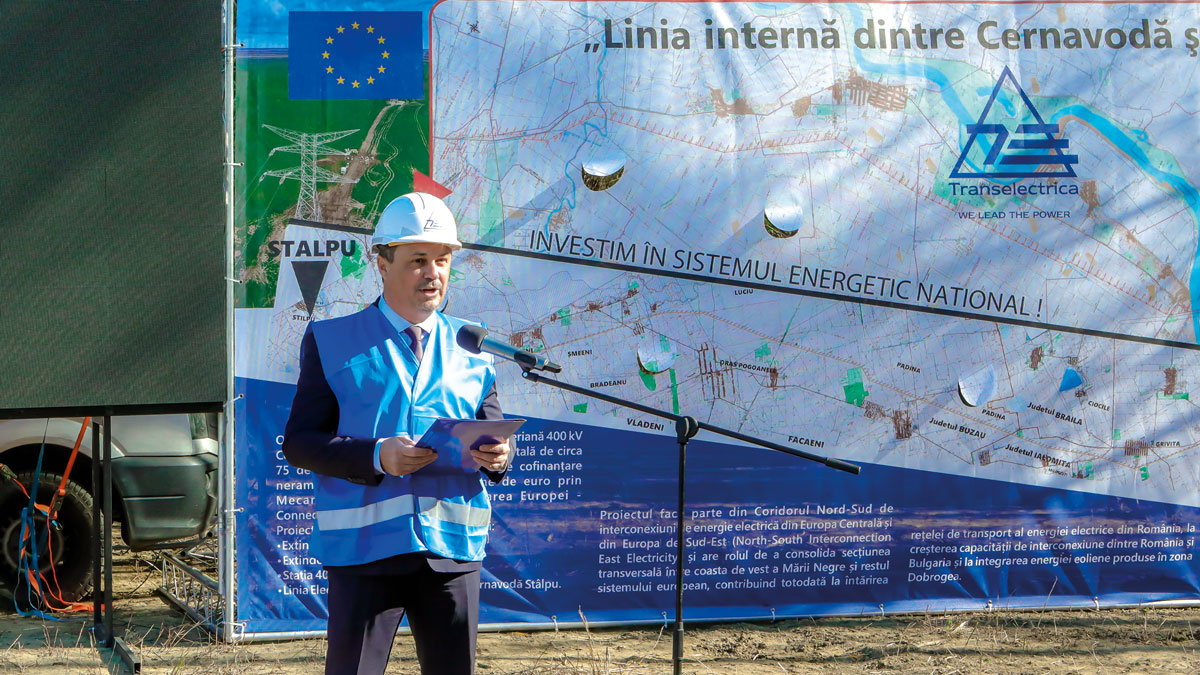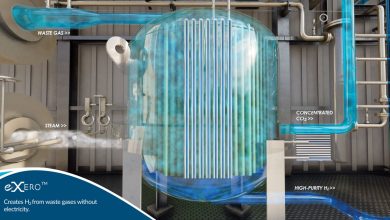400 kV Cernavoda-Stalpu OHL, Danube Crossing Successfully Completed
The project for the construction of the 400 kV Cernavoda-Stalpu Overhead Power Line (OHL) has successfully passed its most difficult and challenging technical stage, namely the crossing of the Danube over a distance of 2.6 kilometres, of which 1.13 kilometres is above water.
The uniquely complex engineering process was completed by Electromontaj SA construction teams, in the presence of Transelectrica management, Electromontaj SA General Manager Ionut Tanasoaica, Deputy Secretary General of the Government and member of Transelectrica’s Supervisory Board Alexandru-Cristian Vasilescu, Secretary of State in the Ministry of Energy George Niculescu, President of the Chamber of Deputies’ Committee for Industries and Services Bende Sándor, and official representative of the European Climate, Infrastructure and Environment Executive Agency (CINEA) Ona Kostinaite-Grinkeviciene – Head of Sector CEF.
“I am honoured to be here with you today to celebrate this historic milestone and I am also very happy that in 2017 we granted Transelectrica this EUR 27 million co-financing so that this project could be realized. This line is a very important project for us, it has a significant energy dimension for us, and I believe for us and for the whole of Europe. I can tell you that the recent Russian aggression against Ukraine has reshaped our lives. Now, more than ever, we need funding for electricity. I know this journey for you and for all of us has not been very easy. Therefore, I want to thank everyone who made this happen. Building infrastructure is not an easy thing. Congratulations on completing this part of the infrastructure!” Ona Kostinaite-Grinkeviciene – Head of Sector CEF, said.
“We are witnessing the completion of a masterpiece that marks the technological evolution and development of the power transmission grid, which is why I thank the builders and specialists of the Company who have made this possible through effort, dedication and professionalism. This project closely reflects the complexity of the infrastructure managed by Transelectrica, with all the challenges, from the technical design stage to power-up, whether it is power lines crossing the Danube or crossing mountains. We understand the urgency of expanding the power transmission grid to ensure national and regional energy security and that is why we have planned investments of around EUR 2 billion for the next decade. It is an ambitious plan, but absolutely necessary for Romania,” said Gabriel Andronache, CEO of Transelectrica.
A large part of Transelectrica’s team of technical specialists who have contributed significantly to the implementation of the investment over the years participated in this historic stage: project managers and supervisors, site managers, engineers, together with representatives of the specialist departments within the Company that ensured the implementation of the investment.
The Danube River crossing stage took about three weeks, including the preparatory phases. Its complexity and uniqueness involved special efforts from Transelectrica’s contractors and teams of experts, being the first such large-scale electrical engineering work carried out in the Romanian Transmission Grid in the last 35 years. The double-circuit overhead power line is supported on both sides of the Danube by the tallest high voltage pylons – 150 metres – in the entire national energy infrastructure.
The only such work crossing the Danube was built in 1987, the 400 kV Cernavoda-Gura Ialomiței OHL.
The 400 kV Cernavoda-Stalpu Overhead Power Line infrastructure objective, an investment worth a total of around EUR 75 million, benefits from EUR 27 million in non-reimbursable co-financing through the Connecting Europe Facility (CEF). The project is part of the North-South Interconnection East Electricity Corridor and aims to strengthen the cross-section between the western Black Sea coast and the rest of the European system, while contributing to the strengthening of the power transmission grid in Romania, increasing the interconnection capacity between Romania and Bulgaria and integrating wind energy produced in the Dobrogea area.
The route of the projected line is 160 kilometres long and crosses the territory of three counties: Constanta County (6 kilometres with double circuit), Ialomita County (94 kilometres with double circuit and 5 kilometres with single circuit) and Buzau County (54 kilometres with double circuit), with 22 administrative territorial units: Cernavoda, Seimeni, Stelnica, Bordusani, Facaeni, Vladeni, Mihail Kogalniceanu, Gura Ialomitei, Tandarei, Valea Ciorii, Scanteia, Grivita, Milosesti, Padina, Pogoanele, Smeeni, Gheraseni, Costesti, Stalpu, Saligny, Fetesti and Luciu.



